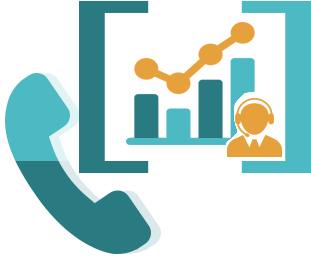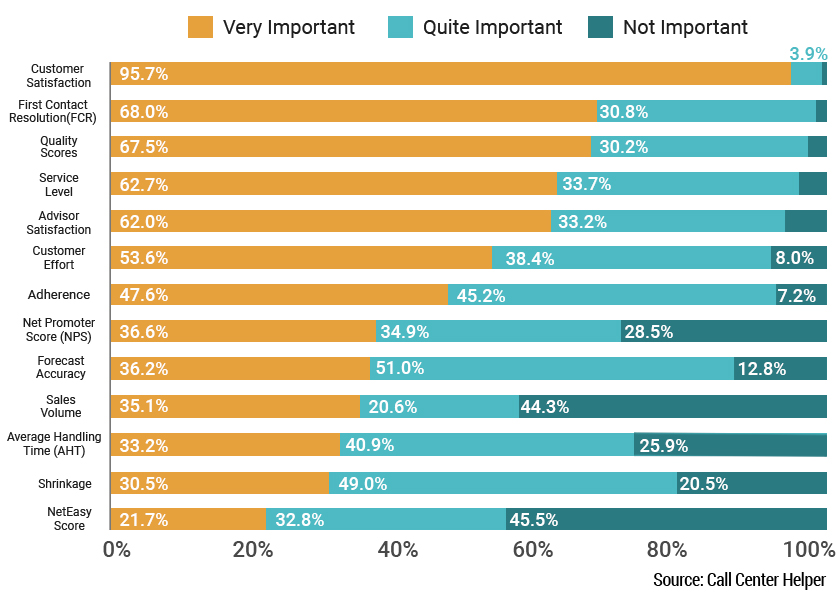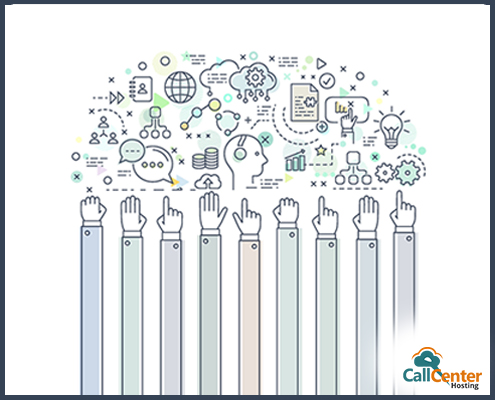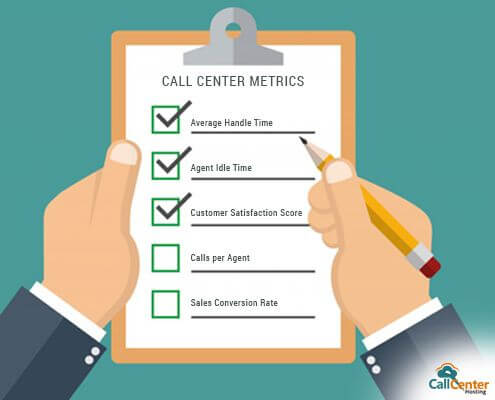What are Call Center Metrics?
Peter Drucker once said, “You can’t manage what you don’t measure.”
In this phrase lies the essence of call center metrics. They are the front seat driver to measure the operational and eventually the financial growth for both, inbound and outbound call centers.
Every business has some short term and some long-term goals. Call center metrics help identify and track these goals for a better understanding of the progress and variables.
Call center metrics and KPI (Key Performance Indicators) are often used interchangeably, but they have a relationship like rectangles and squares where a square is just a special kind of rectangle, and we can say that all squares are rectangles, but all rectangles are not squares. Similarly, all KPIs are metrics, but not all metrics are KPIs.
In this phrase lies the essence of call center metrics. They are the front seat driver to measure the operational and eventually the financial growth for both, inbound and outbound call centers.
Every business has some short term and some long-term goals. Call center metrics help identify and track these goals for a better understanding of the progress and variables.
Call center metrics and KPI (Key Performance Indicators) are often used interchangeably, but they have a relationship like rectangles and squares where a square is just a special kind of rectangle, and we can say that all squares are rectangles, but all rectangles are not squares. Similarly, all KPIs are metrics, but not all metrics are KPIs.
How Do Call Center Metrics Work?
Call center metrics can be used to measure different aspects of a call center. For example, the customer experience, outbound calling, operation efficiency, and the agent experience. Let’s dive in and take a closer look at all these categories.
Customer Experience
Customer happiness is the foremost priority for a business. Happy customers equal excellent customer experience, which in turn improves the overall productivity and profit of the business.
Outbound Calling Metrics
Many call centers operate on making only outbound calls. These metrics help identify the progress of outbound dialing and maintain efficiency. They also track the productivity and conversions that these outbound calls are bringing in.
Operational Efficiency
Managing and understanding operations of your business and keeping track of the financial aspects is also significant for call center success. Understanding your resources and using them efficiently is one way to increase productivity. Understanding operational efficiency metrics helps to figure out where exactly the resources are being used and what are the areas that have some scope of improvement.
Agent Experience
Just like customer experience, it is essential to track the agent experience as only a happy agent can help with a hiked and enhanced customer experience. Tracking agent experience can help ensure that your agents are happy and working to their full potential.
The Most Important Call Center Metrics
According to Call Center Helper, some metrics are more important than the others. Hence, we have listed down the 10 most important call center metrics in the image below.
These are the metrics that cannot be ignored and should be tracked if your call center wants success in their business.
These are the metrics that cannot be ignored and should be tracked if your call center wants success in their business.
Some Important Call Center Metrics And How They Help
Now that we have looked at the categories of call center metrics, let’s take a look at some call center metrics that are crucial for any call center and help in tracking the call center performance and efficiency.
Conversion Rate
Conversion can have different meanings for different businesses. The conversion rate metric helps understand how many calls resulted in a positive outcome. The positive outcome can be anything from a sale made to an issue resolved.
Abandonment Rate
The abandonment rate is the number of calls that get abandoned by the customer because no agent was available to take them. According to TCPA (Telephone Consumer Protection Act) compliance, it is mandatory to maintain an abandonment rate under 3%, which makes it imperative for the businesses to do so.
Customer Satisfaction (CSAT)
Customer satisfaction is one of the most important metrics to measure customer experience. It helps a business know how satisfied their customers are with the product/service at any given point of time. Surveys are handed out to customers after a successful interaction with them to calculate the customer satisfaction level.
Call SLA or Service Level
Call SLA is the percentage of calls answered in a fixed amount of (say x) seconds. A higher SLA means that your customers are spending less time waiting to speak with an agent.
Downtime
Downtime is the time during which your services are down or non-functional. A high downtime is fatal for any call center as it results in altered customer service, and in turn, an overall bad customer experience.
Net Promoter Score (NPS)
A service or a product is considered good when one of your friends/acquaintances gives it a golden stamp. Net promoter score works similarly. It is the percentage of your customers recommending your product, or we can say the portion advocating it.
First Call Resolution (FCR)
These days FCR is not just first call resolution, but it can be any medium of first contact resolution. FCR is the measure of customers whose queries or problems were solved in the first contact or interaction. A high FCR rate accounts for happier customers.
Average Wait Time
Average wait time is the measure of the time your customers have to wait before connecting to an agent. High average wait time is not good as it accounts for unhappy customers.
Self-service Usage
In the modern-day contact centers, self-service options like IVR and self-help articles are top-rated. The self-service usage metric determines how many customers can solve their issues without having to engage with an agent.
Quality Scores
Quality scores are like a scorecard for every agent. They help track the highest and lowest performing agents while highlighting which team or agent requires additional coaching.
Average Handling Time (AHT)
The average handle time is the total time an agent takes with one customer. This time is calculated the moment an effort is made, which means it includes all the wait time, hold time, after call work time, and talk time. It helps understand how much time an average customer requires.
Cost per Contact
Cost per call is the cost your call center bears for each call made. It is crucial to track cost per call for smooth management and better financial decisions.
After Call Work Time (ACW)
After call work time or the call wrap-up time refers to the time an agent spends after the call has been completed. This time can include taking notes, writing feedback, making an entry in the CRM and any other associated work. A complex or poorly integrated CRM can result in a hike of ACW time.
Forecast Accuracy
There are specific on and off seasons for different call centers. Accurate forecasting of these help in upscaling and downscaling as required along with being prepared with the needed resources at any point of time.
Agent Attrition
Agent attrition is the number of agents leaving your call center. High agent attrition can result in enormous losses for the call center, and hence, it is important to keep the attrition rate in check.
Advisor Satisfaction
Just like customer satisfaction, advisor satisfaction, or agent satisfaction score is the measure of how happy and content the individual agent is with his/her work. Because an agent with the right mindset can only provide the best possible customer service to the customers. A higher advisor satisfaction score ensures that they give their hundred percent to their work.
Agent Absenteeism
Agent absenteeism is the number of days an agent misses from his/her total number of working days. A low absenteeism rate means that your resources are being utilized to their full potential, and the call center is working towards higher productivity.
Schedule Adherence
Schedule adherence refers to how many agents are following the schedule they have been given. A low schedule adherence rate could mean that your agents are unhappy or that your business requires a better work management tool.
Call Center Shrinkage
Shrinkage in simple terms is any distraction that is resulting in the agent being occupied and not solving customer issues. This distraction can be anything from bathroom breaks to team meetings.
Customer effort
Customer effort is the calculation of the effort that a customer has to put in to make the interaction and eventually fins a solution. Customer effort is a growing metric as it has a significant impact on customer loyalty.
Calls per Hour
The call per hour metric determines how many calls your agents are making per hour. It helps track the highest and lowest performing agents, deriving the overall efficiency.












